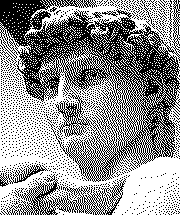Why is 16 to 24 bit no big deal - no popups for conversion?
-
- KVRAF
- Topic Starter
- 6427 posts since 22 Jan, 2005 from Sweden
That only show how the software handle it now.Rockatansky wrote:Just do the damn phase reverse check, there's your proof.
Put a 16-bit and 24-bit file side by side, flip the phase on one, hit play.
No measurable (implying: definitely no audible) difference between a 16-bit file that was "extended" to 24-bit depth.
My reasoning is built on how it could possibly extend handling - and maybe improve increasing bitdepth. Even a single extra value in between the 256 steps, could be enough.
A proper analysis of content to calculate such an extra value could be done.
Heavy analysis math is done when you do pitch correction, properly moving all harmonics that belong together and possibly apply proper formant for that move. You have what modern daws do in stretching audio and changing tempo etc.
But it could be as GAMMA mentioned, big risk to actually introduce more artifacts.
Thanks for otherwise interesting read.
I will continue research on this matter elsewhere.
-
- KVRAF
- Topic Starter
- 6427 posts since 22 Jan, 2005 from Sweden
Yes I do, and your analogy with video and images is all thinking inside the box. Just presenting an image on different devices with different color depth without any adaption of image.Burillo wrote:i think it's demonstrable that in this thread, you pretty much don't care what anyone writes but yourself, and anything that contradicts whatever it is that you already imagined will go in one ear and out from the other. i won't try at guessing why that is.lfm wrote:So you wonder why nobody cares what you write.
I wonder why that is?
This assumes no adaption of image to possibly display and look better on higher color resolution device.
My aim was to extend thinking outside the box over what is not done - as far as we know.
And adapt 16-bit material with math to possibly become closer to original 24 bit audio, if that were the case.
Working with raw format images from DSLR camera - you realize that sooooo much is processed for you, according to you settings. Did you assign a landscape profile, camera suggest values in raw image that will make colors more vivid and higher contrast etc. If you select this is a portrait colors are adapted a bit to skin color etc. And you can process this highly to your liking afterwords, all the raw data is there for you to choose.
There are so many things we just use without thinking what happends under the hood, sort of.
Same with analog hardware emulating stuff - content is heavily analyzed for frequency content and what is base notes and how to favour even harmonics added to this material.
Some choices of modern dithering analyze content and levels to adapt noise so as little harm as possible is applied to bitdepth reduction content. Especially not introducing new artifacts that create patterns that our brain interprete as a frequency of some sort.
So the idea I still live by is that there might be math that enhance 16-24 bit conversion.
The title of topic is probably answered in this thread - nobody do anything that others don't.
Maybe there is a good reason for that - or they did not try hard enough.
- If there are some idiots using 16-bit stuff in a 24-bit project, live with it
is maybe how they think.
- KVRAF
- 4434 posts since 15 Nov, 2006 from Hell
no, you don't, which is why you keep missing the basic point.lfm wrote:Yes I do
16-bit already provides enough information down to -96dB. even if the clever algorithms you mention were implemented, the effect would not be perceptible, as it would go from -96dB down to -144dB. anything below -80dB is pretty much classified as "inaudible" for all intents and purposes, which is why you won't get any increase in quality if you do such magic conversions from 16 bit to 24 bit. 16-bit is already enough to represent everything you're realistically interested in. the most you will be getting is lower noise floor.
and before you miss the point yet again and go on about how i think "16-bit is perfect", may i remind you that you. don't. do. processing. at. 16. bit. and neither you do at 24-bit. your DAW increases bit depth to at least 32-bit float (64-bit or more in case of REAPER and a few other DAWs), many plugins process at 64-bit float internally - that's what you process at. the DAW then downconverts your sound back to 24-bit on playback/render, the horror! lost resolution!
you can do a simple experiment - record something in 24-bit, bounce your stems, mix them etc. do a render. then, downgrade your stems to 16-bit and don't touch anything else, and do a render. then do an ABX between two renders (or even a null test), and let us know how it goes.
I don't know what to write here that won't be censored, as I can only speak in profanity.
- KVRAF
- 15280 posts since 8 Mar, 2005 from Utrecht, Holland
SACD is dead, Jim. Higher numbers don't always mean it's a significant improvement.lfm wrote:I guess that is why SACD arised and even vinyl still exist!!!!!
Vinyl today has a completely different reason of existance: nostalgia. In technical terms it's audio quality is subpar,
especially when comparing it with CD. What I can gather from the test data presented in that thread, difference between pink noise @ 0dB VU and the noise floor of an unmodulated groove is 30dB @ 60Hz
but 50dB @ 10kHz, say it's averaging at 40dB. There's ofcourse some headroom to add (about 20dB should be plenty) so you'd get a total SNR of 60dB.
FYI: tape has a SNR of about 70dB.
Are you seriously suggesting to add 26dB of noise, add 1% THD and expect it to sound objectively better?lfm wrote:I guess that can be applied to imported 16-bit stuff too. Cover over it with a good tape emulator.
If distortion should be there, then the producer would have added it, not?
You should question what type of people are that exactly? For what exact reasons do they buy vinyl? How much trust do you have in them actually using their ears?lfm wrote:In the beginning of digital revolution everything was perfect. As time went by, people starting using their ears - and went back to vinyl.
You can simply record the vinyl pressing on CD if that "sound" is more preferred. Just like those producers bounce their stuff to tape & back.
But as a storage/playback medium vinyl really sucks. I did prefer the big 60x30cm fold-open sleeves over tiny CD booklets though.
Nope, the turntables of today are not sold on criteria of their technical merits.lfm wrote:I am suprised turntables of today are sold with wow/flutter specs that nobody would even buy back in the day
No buyer looks at the specs. If sound comes out, it's good. Nothing else matters. Bad turntables always were around, it wasn't until 1980 or so that mainstream turntables were as good as it would get.
The amount of pixels in an image is analoguous to the amount of samples per second in audio.lfm wrote:It's not like upscaling from DVD to 1080, or 1080 to 4k is unheard of. [...] So why not smart upscaling bitdepth for audio????
So that is resampling, not a simple bit depth conversion. There are plenty near-perfect resampling algorithms for audio.
There already is a perfect algorithm to convert from 16 to 24 bit: just append one least-significant byte with zeroes. You don't need to shift the bits to the left eight times or add 127 and remove DC for compensation.
So the problem at hand comes down to: is it possible to get a greater bit depth out of something dithered? The answer is yes, but at a cost.
I took a 1-bit dithered image from the wikipedia article about dither :

Then in Gimp I smoothened it out:

The bit depth is now 8 bits instead of 1, but at the cost of its sharpness. In audio that would mean the loss of high frequencies.
Since a 1-bit image is pretty bad, the only way is up. So let's repeat the very same process with a somewhat more realistic scenario: an image taken from the same page that was dithered:

And processed the same way:

Is it better? Or just different? Is it significant? You tell me, but I really prefer the original
What you seem to forget here is that in 16bit audio the dithering noise is already not perceivable, while in the examples with images I have shown it IS perceivable. Why fix a problem that is not perceivable?
Do you own any of the albums Roger Waters made? He has the habit of opening the album with very soft sound, barely audible, inviting you to turn up the volume. Rip it and look at it in an audio editor. You can see the dithering noise there, it starts in essence with audio in one bit. But can you really hear it (and not blow your speakers / eardrums when he really kicks in) ?
Someone wrote that this is akin to showing your friend how nice your acoustic guitar sounds, but one meter in front of a turning jet engine.
It got edited out alas, it really was a good remark!
We are the KVR collective. Resistance is futile. You will be assimilated. 
My MusicCalc is served over https!!
My MusicCalc is served over https!!


